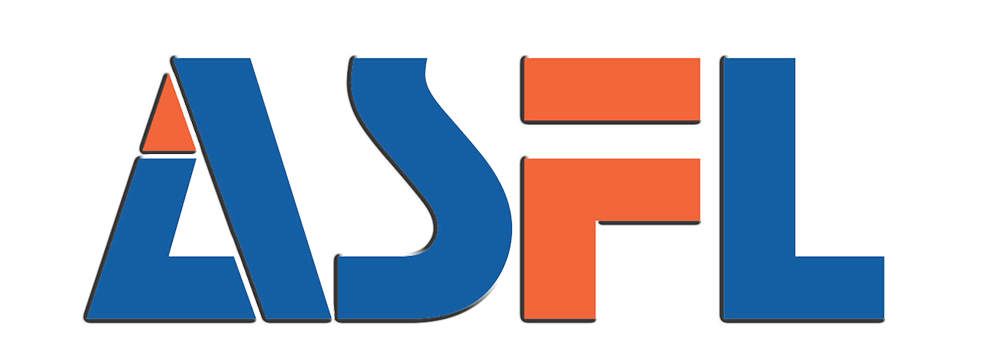Gerekli Dolum Hızını ve Çıkış Kapasitesini Belirleyin
Dolum Hızının Üretim Verimliliği Üzerindeki Etkisi
Ürünlerin doldurulma hızı, bir üretim hattının bir günde ne kadar ürün üretebileceğini büyük ölçüde etkiler. PMMI'nin 2023 yılına ait son sektör raporu bununla ilgili bazı ilginç bulgular ortaya koydu. Saatte 120'den az şişe işleyen ekipmanlarla çalışan tesisler, saatte 800'in üzerinde şişe işleyebilen sistemleri kullanan tesislere kıyasla yaklaşık %23 daha fazla durma süresine sahipti. Yağ dolum makineleri yeterince iyi performans göstermediğinde, genellikle maliyetli fazla mesai ücretlerine veya gece vardiyalarında ek personel alımına neden olarak süreçte ciddi sorun noktalarına dönüşürler. Örneğin saatte yaklaşık 500 şişe işleyebilen yarı otomatik bir makine düşünün. 8.000 adetlik bir siparişi tamamlamak için bu makine yaklaşık 16 saat uzun süre çalışmak zorunda kalır. Buna karşılık saatte 1.200 şişe kapasitesine sahip otomatik bir sistem aynı işi yalnızca 6 saat 40 dakikada bitirir.
Yağ Dolum Makinesi Çıktısını Günlük Üretim Hacmine Uydurma
Gerekli üretim kapasitenizi bu formülü kullanarak hesaplayın:
(Daily Units Needed � Operating Hours) � 1.2 Safety Margin = Minimum Bottles/Hour Requirement İki adet 8 saatlik vardiyada günde 15.000 birim üreten bir dişli yağı üreticisinin ihtiyacı olan:
(15,000 � 16) � 1.2 = 1,125 bottles/hour Bu, fazladan kapasiteye yatırım yapmadan güvenilir bir şekilde teslimatı sağlar.
Vaka Çalışması: Yağ Dolum Hattında Yüksek Hızlı ve Düşük Hızlı Dolum Makineleri Karşılaştırması
Önde gelen bir yağlama üreticisi, iki farklı yağ dolum makinesini karşılaştıran 6 aylık bir deneme gerçekleştirdi:
| Metrik | Yüksek Hızlı Döner Dolum Makinesi (2.500/adet/saat) | Düşük Hızlı Doğrusal Dolum Makinesi (800/adet/saat) |
|---|---|---|
| Üretim Sürekliliği | 98.7% | 89.4% |
| Değişim Süresi | 12 dakika | 27 dakika |
| Enerji Maliyeti/1.000 Birim Başına | $4.20 | $5.80 |
Yüksek hızlı sistem, başlangıçtaki yatırım maliyetinin %40 daha yüksek olmasına rağmen, hacimsel tutarlılığı artırarak üretim atıklarını %30 azalttı.
Strateji: Bir Yağ Dolum Makinesi Seçerken Bütçe ve Verimliliği Dengeleme
Bu kriterleri kullanarak kademeli bir otomasyon yaklaşımı benimseyin:
- Acil İhtiyaçlar: Günlük mevcut ihtiyaçlarınızın %115'ini karşılayan makineleri seçin
- Gelecek İçin Hazırlık: Nozul ekleyerek %35–50 kapasite artırımı yapılabilen modelleri tercih edin
- Maliyet Analizi: Yarı otomatik doldurucular, 2024 Packaging World verilerine göre manuel modellere kıyasla 5 yıllık toplam sahip olma maliyetinde (TCO) %18 daha düşüktür
Temel pnömatik sistemlere göre servo sürüşlü pompaları önceliklendirin—yüksek hızlarda bile ±%0,5 doğruluk sağlar ve pahalı sentetik yağların aşırı dolumunu önler.
Yüksek Dolum Doğruluğu ve Hassasiyetini Sağlayın
Kalite Kontrol ve Uyumluluk İçin Neden Doğruluk Kritik Önem Taşır
Yağ dolum makinelerindeki hassasiyet, ürün tutarlılığını ve mevzuata uyumu doğrudan etkiler. Dolum hacminde yalnızca ±%1'lik bir sapma, ürünlerin %15'inin kalite kontrolünü geçememesine neden olabilir. Gıda sınıfı yağlayıcılar veya ilaç yağları gibi sektörlerde, katı doğruluk standartlarını karşılamak (ISO 21976'ya göre hacimsel sapmada ±%0,5) ürün geri çağırımı önler ve müşteri güvenini korur.
Teknoloji Karşılaştırması: Hacimsel, Net Ağırlık ve Pistonlu Dolum Sistemleri
| Sistem tipi | En iyisi | Doğruluk Aralığı | Hız (BPM) |
|---|---|---|---|
| Hacimsel | Düşük viskoziteli yağlar | ±0.5% | 60–120 |
| Net ağırlık | Yoğunluğu değişken sıvılar | ±0.25% | 30–60 |
| Piston | Yüksek viskoziteli yağlar | ±0.75% | 40–80 |
Sentetik yağlarda sık görülen yoğunluk değişimleriyle başa çıkmada net ağırlık sistemleri üstün performans gösterirken, pistonlu doldurucular 5.000 cP viskoziteye kadar olan dişli yağlarında ±2 mL doğruluk sağlar.
Doğruluk İçin Sektör Standartları: Hacimsel Dolumda ±%0,5 Sapma
ISO 21976:2023 standardı, hava kabarcığı içermeyen yağlar için %0,5'lik hacimsel varyansı zorunlu kılıyor—bu, genel sıvı dolum gereksinimlerinden %37 daha katı bir kıstas. Önde gelen üreticiler, özellikle aşırı dolumun yanma riski oluşturduğu havacılık yağları için, kütle akış ölçerler ve viskoziteye göre düzeltme algoritmaları kullanarak bu seviyeye ulaşıyor.
Strateji: Parti Hassasiyetini Sağlamak İçin Yağ Dolum Makinenizin Kalibre Edilmesi
NIST'e dayalı ağırlıklar ve referans yağlar kullanarak iki haftada bir kalibrasyon kontrolleri uygulayın. Yüksek hacimli hatlarda, sıcaklık dalgalanmaları sırasında dolum hacmini otomatik olarak ayarlayan gerçek zamanlı basınç sensörlü makineler yatırıma değerdir. 2023 yılında yapılan bir vaka çalışması, günlük kalibrasyonun otomotiv yağı ambalajlamasında partiler arası sapmaları %82 oranında azalttığını gösterdi—10.000 birimde ±8 mL'den ±1,4 mL'ye düştü.
Makineyi Yağ Türüne, Viskoziteye ve Ambalaj Gereksinimlerine Göre Seçin
Yağ Viskozitesinin Yağ Dolum Makinelerinin Performansını Nasıl Etkilediği
Yağ viskozitesi, dolum sistemi gereksinimlerini doğrudan belirler. Hidrolik sıvılar gibi düşük viskoziteli yağlar (10–50 cP), yerçekimiyle çalışan sistemlerden serbestçe akar, buna karşılık yüksek viskoziteli yağlayıcılar (500–2.000 cP) akış hızını korumak için pompa destekli çözümler gerektirir. 2023 yılında yapılan bir akışkanlar dinamiği çalışması, uygun olmayan viskozite eşleştirmesinin dolum doğruluğunu %12'ye varan oranda düşürdüğünü ve makine aşınmasını artırdığını ortaya koymuştur.
Doğru Dolum Yöntemini Seçme: Yerçekimi, Pompa veya Basınç Tabanlı Sistemler
- Yerçekimi ile doldurucu : Düşük viskoziteli yağlar (<100 cP) için idealdir ve saatte 200–800 şişe kapasiteyle ±%1,5 doğruluk sağlar.
- Pompa sistemleri : Dişli yağları ve 3.000 cP'ye kadar olan gresleri işleyebilir; servo kontrollü modeller ±%0,5 hassasiyet sunar.
- Basınç destekli dolum makineleri : Hava kabarcıklı veya köpüren yağlar için gereklidir ve hava sıkışmasına rağmen tutarlı dolum yapar.
Vaka Çalışması: Yüksek Viskoziteli Dişli Yağları İçin Pompa Destekli Dolum Makinesi
Bir Avrupa yağlayıcı üreticisi, pistonlu pompa yağ dolum makinesine geçtikten sonra ürün kaybını %18 azalttı. Sistemin ısıtmalı hoppersu (60°C) ve progresif boşluklu pompa, saatte 1.200 şişe ile ±%0,8 sapma ile 90W dişli yağı akışını sağladı.
Yüksek Kesme Kuvvetine Hassas Olan Yağların Nazik Dolum Teknolojisiyle İşlenmesi
Silikon bazlı ve sentetik yağlar yüksek kesme kuvvetleri altında bozulur. Laminer akış kontrolüne sahip nazik dolum nozulları, moleküler bütünlüğü korur—viskozitede %5'lik bir değişim garantiyi geçersiz kılabilen özel yağlar için hayati öneme sahiptir.
Yağ Dolum Makinesinin Farklı Kaplara (Şişe, Varil, Kova) Uyarlanması
Modern yağ dolum makineleri, 50 ml'lik şişelerden 200 litrelik varillere kadar farklı kaplara uyum sağlayabilmek için değiştirilebilir nozullar ve programlanabilir Z-ekseni kontrollerine sahiptir. Hızlı değişim sistemleri, 10'dan fazla stok kodu üreten tesisler için gerekli olan format değişimini 15 dakikadan kısa sürede yapmayı sağlar.
Farklı Kap Boyutları ve Dolum Hacimleri İçin Ayarlanabilirlik
Şunlara sahip sistemleri tercih edin:
- Yükseklik Ayarlama Aralığı : En az 150 mm'den 1.200 mm'ye kadar
- Hacimsel esneklik : Nozle değişimi olmadan 10 ml–20 L arası
- Dara telafisi : Kapsül ağırlığındaki farklılıkları otomatik olarak 5 kg'ye kadar ayarlar
Önde gelen modeller, daralan kutular veya geniş ağızlı kovalar gibi düzensiz şekiller de dahil olmak üzere 50'den fazla kap türünde ±%0,3 doğruluk korumak için yük hücreleri ile yapay zeka destekli tahmin algoritmalarını birleştirir.
Otomasyon Seviyesini ve Kontrol Özelliklerini Değerlendirin
Manuel, Yarı Otomatik ve Tam Otomatik Yağ Dolum Makineleri Karşılaştırması
Manuel sistemler küçük parti üretimler için uygundur (<500 birim/gün) ve doğrudan operatör müdahalesi gerektirir. Yarı otomatik yağ dolum makineleri, zamanlanmış döngüler ve konveyör entegrasyonu sayesinde günde 1.000–5.000 birim işleyebilir ve iş gücü gereksinimlerini %35–50 oranında azaltır. Robotik paletleme ile tam otomatik hatlar saatte 10.000 birimi aşabilir ancak yarı otomatik sistemlerin başlangıç yatırımının 4–7 katını gerektirir.
Otomasyonun İş Gücü Maliyetlerini Nasıl Azalttığı ve Çalışma Süresini Nasıl Artırdığı
2023 yılı üretim verimliliği araştırmalarına göre, otomatik yağ dolum makineleri, yağlayıcı tesislerindeki manuel malzeme taşıma görevlerinin %72'sini ortadan kaldırmaktadır. Kendinden ayarlı nozullara sahip gelişmiş modeller, 7/24 operasyonlarda ±%0,3 dolum hassasiyeti sağlayarak ürün israfını ve denetim ihtiyaçlarını en aza indirmektedir.
Trend: Uzaktan İzleme ve Tanılamalar İçin IoT Destekli Yağ Dolum Mekanları
Modern sistemler artık motor titreşimlerini, yağ sıcaklıklarını ve dolum sapmalarını izleyen bulut bağlantılı sensörler sunmaktadır. Önde gelen bir gıda sınıfı yağlayıcı üreticisi, dolum hatlarına IoT destekli tahmine dayalı analitikleri entegre ettikten sonra planlanmayan bakım olaylarında %41 azalma bildirmiştir.
Strateji: Üretim Hattını Güncellemekte Olan KOBİ'ler İçin Aşamalı Otomasyon
Küçük ve orta ölçekli işletmeler, hemen geri dönüş sağlayan otomasyon özelliklerine öncelik vermelidir:
- Programlanabilir mantık kontrolcü (PLC) arayüzüne sahip yarı otomatik makinelerle başlayın
- Otomatik konteyner indeksleme gibi modüler otomasyon ekleyin (üretim kapasitesinde %23–28 artış)
- Kademeli olarak parti izleme uyumluluğu için akıllı sensörleri entegre edin
Bu kademeli yaklaşım, sermaye maliyetlerini yayarken ilk 18 ay içinde tam otomasyonun verimlilik faydalarının %65–80'ine ulaşmayı sağlar.
İmalat Kalitesini, Güvenliği ve Toplam Sahiplik Maliyetini Değerlendirin
Bir yağ dolum makinesi seçmek, inşaat malzemeleri, güvenlik protokolleri ve kullanım ömrü maliyetlerinin dikkatli bir şekilde değerlendirilmesini gerektirir. Başlangıç fiyatlandırması genellikle tartışmaları yönlendirse de uzmanlar, bakım, onarım ve enerji tüketiminin 10 yıllık bir dönem boyunca toplam sahiplik maliyetinin %62'sini oluşturduğunu tahmin ediyor.
Yağ Dolum Makinelerinde Paslanmaz Çelik ve Malzeme Uygunluğunun Önemi
Paslanmaz çelik (304 veya 316 kalite), asidik katkı maddeleriyle olan uyumluğundan ve korozyona dayanıklılığından dolayı yağ temas yüzeyleri için sektör standardı olmaya devam etmektedir. Gıda sınıfı yağları işleyen makineler genellikle bakteri büyümesini önlemek için parlatılmış yüzeyler (Ra ≤ 0,8µm) gerektirirken, petrol uygulamaları aşındırıcı partiküllere karşı dayanabilmek için sertleştirilmiş çelikler talep eder.
Tehlikeli Ortamlar için Temel Güvenlik Özellikleri
Modern yağ dolum sistemleri patlamaya karşı korumalı motorlar (ATEX/IECEx sertifikalı), statik dağıtım sistemleri (10 megaohm direnç) ve basınç 2,5 bar'ı aştığında devreye giren acil boşaltma valfleri içerir. Bu özellikler, uçucu organik bileşiklerin alt patlama limitinin (LEL) %25'ini aştığı ortamlarda tutuşma riskini önler.
Temizlik ve Bakım Kolaylığı: Downtime ve Kirlenme Riskini Azaltmak
Hızlı değişim meme aparatları (90 saniyenin altında araçsız söküm) ve CIP (Yerinde Temizleme) sistemleri, geleneksel modellere kıyasla değişiklik süresini %73 oranında azaltır. Kritik bileşenlerin sökülmeden kapsamlı temizliğine olanak tanıyan 60 cm erişim panelleriyle açık çerçeve tasarımlar.
Satın Alma Fiyatının Ötesinde: Uzun Vadeli İşletme ve Bakım Maliyetlerinin Değerlendirilmesi
2025 yılı sektör analizi, ilk maliyeti %15 daha yüksek olan yüksek performanslı yağ dolum makinelerinin şu şekilde TCO'yu (Toplam Sahip Olma Maliyeti) %31 daha düşük seviyeye çektiğini ortaya koymuştur:
- Enerji verimli servo motorlar (100 L dolum başına 0,5 kW·h)
- Stok maliyetlerini azaltan standart yedek parçalar
- Planlanmamış durma süresini %42 oranında azaltan tahmine dayalı bakım arayüzleri
Indeed'in TCO analizine göre, endüstriyel ekipmanlar için işletme maliyetleri genellikle ilk satın alma fiyatını 18-24 ay içinde aşmaktadır.
Tedarikçi Desteği ve Satış Sonrası Hizmet: Ucuz Makine Paradoksundan Kaçınmak
İtibarlı tedarikçiler, en az 3 yıllık performans garantisi ve 48 saatte saha hizmeti yanıt süresi sunar. 2023 yılında yapılan bir çalışma, sertifikalı teknik ortaklar kullanan üreticilerin, düşük bütçeli ekipman kullanıcılarına kıyasla dolum hassasiyetindeki sapmalara yönelik çözüm sürelerinin %78 daha hızlı olduğunu göstermiştir.
Sıkça Sorulan Sorular
Bir yağ doldurma makinesi seçimi üzerinde etkili olan faktörler nelerdir?
Faktörler arasında yağ türü, viskozite, kap boyutu ve istenen otomasyon düzeyi yer alır. Ayrıca, bütçe değerlendirmeleri ve uzun vadeli işletme maliyetleri önemli roller oynar.
Yağ viskozitesi, doldurma makinesi performansını nasıl etkiler?
Viskozite, gereken doldurma yöntemini belirler; ince yağlar yerçekimiyle çalışan doldurucularla çalışır, yüksek viskoziteli yağlar ise pompa destekli sistemlere ihtiyaç duyar.
Yağ doldurma makinelerinde doğruluk neden önemlidir?
Doğruluk, ürün tutarlılığını ve düzenleyici standartlara uyumu sağlar. Sapmalar kalite kontrol hatalarına yol açabilir ve bu da geri çağırmalara neden olabilir.
Doldurma hassasiyetini artıran teknolojiler nelerdir?
Net ağırlık, hacimsel ve pistonlu sistemler ile gerçek zamanlı basınç sensörleri gibi teknolojiler doldurma doğruluğunu artırır.
İçindekiler
- Gerekli Dolum Hızını ve Çıkış Kapasitesini Belirleyin
- Yüksek Dolum Doğruluğu ve Hassasiyetini Sağlayın
-
Makineyi Yağ Türüne, Viskoziteye ve Ambalaj Gereksinimlerine Göre Seçin
- Yağ Viskozitesinin Yağ Dolum Makinelerinin Performansını Nasıl Etkilediği
- Doğru Dolum Yöntemini Seçme: Yerçekimi, Pompa veya Basınç Tabanlı Sistemler
- Vaka Çalışması: Yüksek Viskoziteli Dişli Yağları İçin Pompa Destekli Dolum Makinesi
- Yüksek Kesme Kuvvetine Hassas Olan Yağların Nazik Dolum Teknolojisiyle İşlenmesi
- Yağ Dolum Makinesinin Farklı Kaplara (Şişe, Varil, Kova) Uyarlanması
- Farklı Kap Boyutları ve Dolum Hacimleri İçin Ayarlanabilirlik
-
Otomasyon Seviyesini ve Kontrol Özelliklerini Değerlendirin
- Manuel, Yarı Otomatik ve Tam Otomatik Yağ Dolum Makineleri Karşılaştırması
- Otomasyonun İş Gücü Maliyetlerini Nasıl Azalttığı ve Çalışma Süresini Nasıl Artırdığı
- Trend: Uzaktan İzleme ve Tanılamalar İçin IoT Destekli Yağ Dolum Mekanları
- Strateji: Üretim Hattını Güncellemekte Olan KOBİ'ler İçin Aşamalı Otomasyon
-
İmalat Kalitesini, Güvenliği ve Toplam Sahiplik Maliyetini Değerlendirin
- Yağ Dolum Makinelerinde Paslanmaz Çelik ve Malzeme Uygunluğunun Önemi
- Tehlikeli Ortamlar için Temel Güvenlik Özellikleri
- Temizlik ve Bakım Kolaylığı: Downtime ve Kirlenme Riskini Azaltmak
- Satın Alma Fiyatının Ötesinde: Uzun Vadeli İşletme ve Bakım Maliyetlerinin Değerlendirilmesi
- Tedarikçi Desteği ve Satış Sonrası Hizmet: Ucuz Makine Paradoksundan Kaçınmak
- Sıkça Sorulan Sorular





